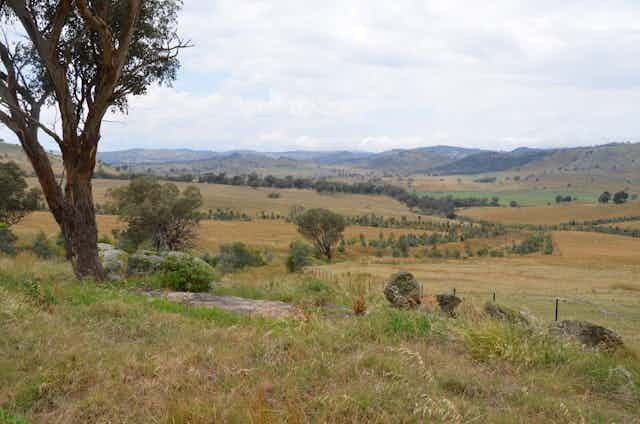The recent Global Food Forum featured several prominent businessmen calling for Australia to dramatically increase its contribution to global food security, in particular highlighting business opportunities for Australian agriculture to feed Asia’s burgeoning middle classes.
While this renewed interest in the potential of Australian agriculture is welcome, how realistic are calls to double or quadruple Australia’s food production? And what principles need to be observed as we embark on this journey?
Current situation
Australia is a large country with a relatively small population. It is easy to gain the misleading impression that we have vast idle land and water resources just waiting to be converted into agriculture. The truth is far from this.
In southern and eastern Australia, most land that is suitable for agriculture has already been converted into crops or pastures. The situation for water is even more constrained. Agriculture consumes around 70% of available fresh water and most river systems are already over committed.
Fast forward to 2050 and it is likely that there will be less, not more, land and water available for food production. The reasons are well recognised: competing claims on land and water from mining, urban expansion, biomass for energy, and environmental conservation; a hotter, drier, and more variable climate under climate change; and a belated recognition that past loss of biodiversity resulting from agricultural practices is unacceptable and unsustainable.
The exception to this picture is northern Australia… maybe. Yes, there are untapped land and water resources, but the soils are often fragile, the climate harsh, and attempts at establishing thriving agricultural industries in the north make for sobering reading, although the cattle industry has proven resilient and tropical horticulture provides some success stories. In any case, future agricultural industries in the north will need to based on scientific research that acknowledges agricultural production must remain within ecological limits. Much research is needed.
Will government and industry invest in the required research? Australian farmers are a resilient lot. They have remained in business despite droughts, floods, a high Australian dollar, low commodity prices, and increasingly complex regulatory and policy settings. Australian agricultural production has historically grown at around 2% per annum, an impressive result built on sustained government and industry investment in agricultural research and development. However, recent evidence reveals productivity growth in agriculture has been declining, and a major contributing factor is falling investment in research and development. If Australia is to greatly expand its contribution to global food security, there will need to be a significant and sustained increase in agricultural R&D, and this will need to come from both government and the private sector. But what research is needed, where is the strategic vision?
Sustainable intensification
Global food security will be the defining challenge of the 21st Century. How do we feed 9-10 billion by 2050 given we live on a finite planet? The strategy of simply harnessing more resources (land, water, energy) into agriculture, although effective in the past, will no longer be feasible.
We must learn to live within ecological limits. There is already evidence that we have exceeded safe limits for nitrogen pollution, fresh water extraction, loss of biodiversity, and carbon pollution, and agriculture is often both the perpetrator and the victim of environmental degradation. There is growing recognition that future growth in agricultural production must be balanced with desirable environmental outcomes. Is this possible?
It has to be, we have no other option. Sustainable Intensification is emerging as the new paradigm that promises increased production within ecological limits, or “more from less”. Sustainable intensification has three core elements:
producing more output from the same area of land (or unit of water, etc)
while reducing the negative environmental impacts, and at the same time,
increasing contributions to natural capital and the flow of environmental services.
This won’t be easy and it is a far more nuanced and complex challenge then simply doubling or quadrupling production. This challenge is not something abstract or intellectual, it is real and it is here and now.
Yes, sustainable intensification will require renewed investment in traditional strategies like agronomy, plant breeding, soil science and ecology. But investment in complimentary strategies like reducing population growth rates, reduction of food waste, land use planning, enabling markets, and promoting food literacy demands a coordinated vision and strategy from government.
Last but not least, we need a public and informed discussion around the ethics of food, agriculture and the environment.
There are around 1 billion food insecure globally, with 400 million in India alone. It has been estimated that Australia (population 22 million) produces enough food for 60 million, so Australia is one of the relatively few food exporting countries. Australia should continue to be a food exporting country, but we need to do so within our ecological limits.
Australia’s Chief Scientist recently pointed out that while Australia’s role as a food exporting country is vital, Australian agricultural knowledge and expertise is even more valuable, benefitting an additional 200 million people, often those most vulnerable. If Australia can double or quadruple food production, and improve its natural resource base through the principle of sustainable intensification, then we will have made a tremendous contribution to humanity.

